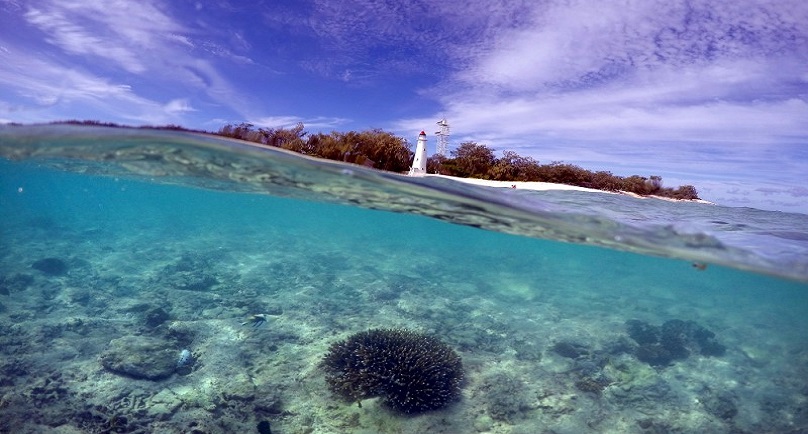![]()
By Colin Packham
SYDNEY (Reuters) – Mass coral bleaching has destroyed at least 35 percent of the northern and central Great Barrier Reef, Australian scientists said on Monday, a major blow to the World Heritage Site that attracts about A$5 billion ($3.59 billion) in tourism each year.
Australian scientists said the coral mortality figure will likely rise as some of the remaining 65 percent of coral in the northern and central reefs fails to recover from bleaching.
The report casts a shadow over the long-term prospects of the Great Barrier Reef against a backdrop of climate change and scientists said UNESCO may reconsider its decision not to put the World Heritage Site on its endangered list.
“Australia argued that the world heritage values were in tact because of the northern region and now of course it has taken a huge hit,” said Professor Terry Hughes, director of the ARC Centre of Excellence for Coral Reef Studies at James Cook University in Queensland state.
UNESCO’s World Heritage Committee last May stopped short of placing the Great Barrier Reef on an “in danger” list, but the ruling raised concern about its future.
Australian scientists said in March that just seven percent of the Great Barrier Reef had avoided any damage as a result of bleaching, and they held grave fears particularly for coral on the northern reef.
After further aerial surveys and dives to access the damage across 84 reefs in the region, Australian scientists said the impact of the bleaching is more severe than expected.
“This year is the third time in 18 years that the Great Barrier Reef has experienced mass bleaching due to global warming, and the current event is much more extreme than we’ve measured before,” said Hughes.
The findings would have been worse had Cyclone Winston, which hit the reef in January, not bought cooler conditions across the central and southern reefs, the scientists said.
Bleaching occurs when the water is too warm, forcing coral to expel living algae and causing it to calcify and turn white. Mildly bleached coral can recover if the temperature drops, otherwise it may die.
Although the impact has been exacerbated by one of the strongest El Nino weather systems in nearly 20 years, which raised sea temperatures in the western Pacific, scientists believe climate change is the underlying cause.
The bleaching survey findings come just days after Australia’s Department of Environment confirmed it omitted its contribution to a U.N. report examining the impact of climate change on world heritage sites over concerns it could create “confusion” and have a negative impact on tourism.
Australia is one of the largest carbon emitters per capita because of its reliance on coal-fired power plants for electricity. Climate scientists argue that increased carbon dioxide in the atmosphere traps heat radiating from Earth, creating global warming.
($1 = 1.3928 Australian dollars)
(Reporting by Colin Packham; Editing by Andrew Bolton and Michael Perry)
Copyright 2016 Thomson Reuters. Click for Restrictions.


